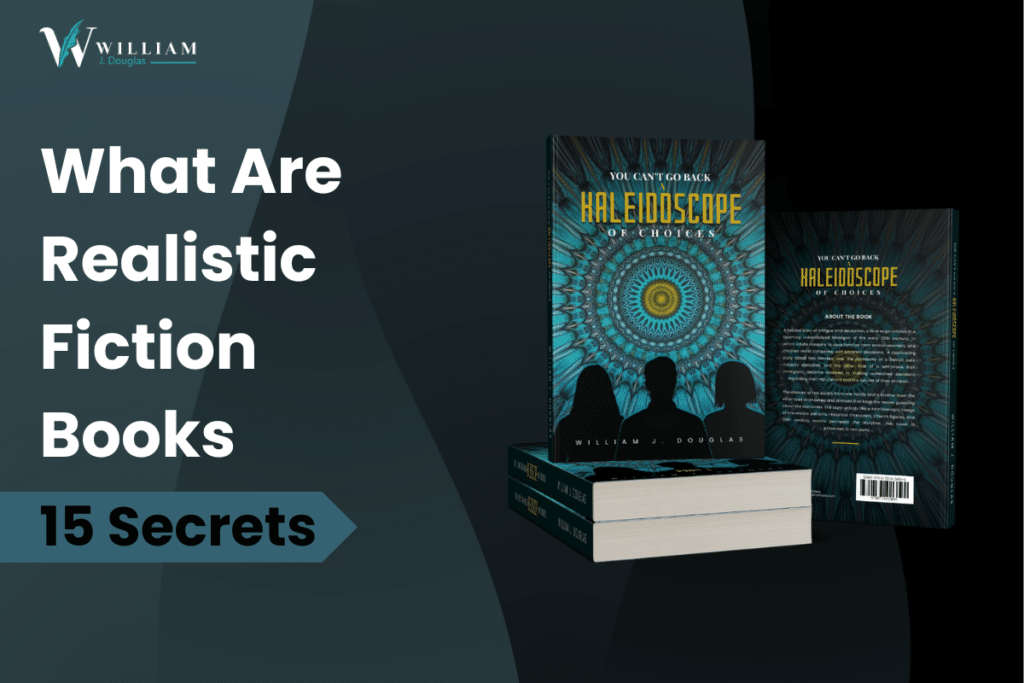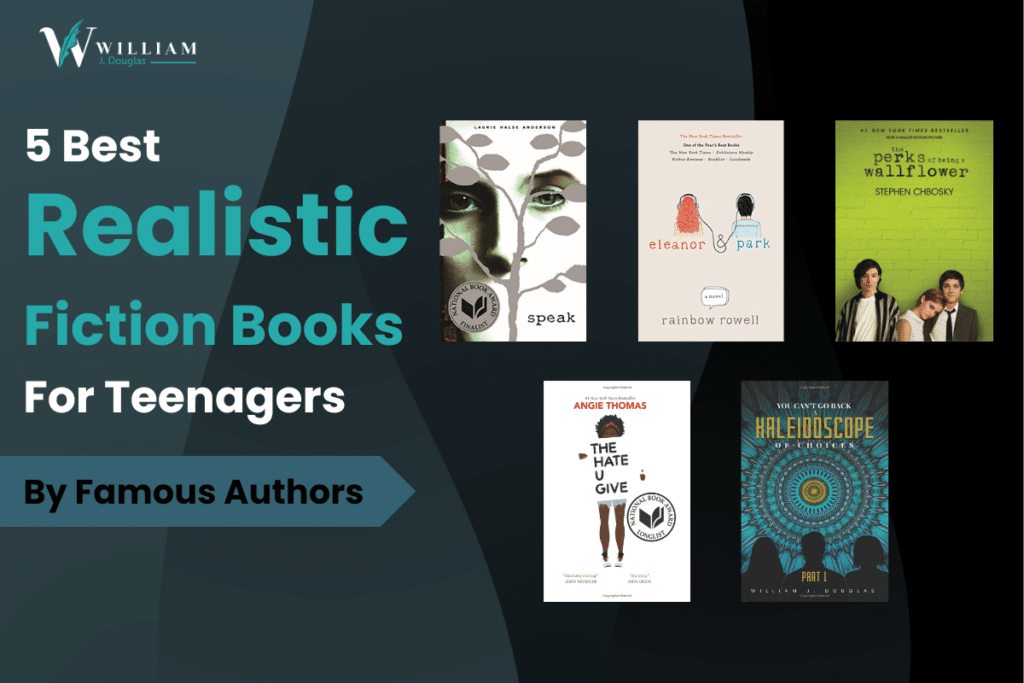
Introduction
Realistic fiction is a powerful genre in literature that mirrors the real-life experiences and challenges teenagers face. By delving into these narratives, young readers can relate, empathize, and find solace in the characters’ journeys. This article presents a carefully curated list of the five best realistic fiction books specifically tailored for teenagers. These books encapsulate the essence of adolescence, making them a must-read for any young adult seeking inspiration, understanding, and entertainment.
People will also interested in reading about “realistic fiction genre definition“.
BEST REALISTIC FICTION BOOKS
Following are some of the best realistic fiction books.
-
“The Perks of Being a Wallflower” by Stephen Chbosky
“The Perks of Being a Wallflower” is a timeless classic that has captured the hearts of millions of readers worldwide. Set in the form of letters written by the introverted protagonist, Charlie, this book explores themes of friendship, love, and the challenges faced during teenage years. As Charlie navigates high school, he befriends a group of misfit seniors who leave a profound impact on his life. This heartwarming and emotional journey of self-discovery makes it a must-have on every teenager’s bookshelf.
-
“Eleanor & Park” by Rainbow Rowell
Rainbow Rowell’s “Eleanor & Park” tells the touching tale of two misfit teenagers who find solace in each other’s company. Set in the 1980s, the story follows Eleanor, a quirky and unconventional girl, and Park, a half-Korean boy with a love for music and comics. As they share bus rides, comic books, and mixtapes, their love blossoms against all odds. This realistic portrayal of first love, filled with raw emotions and tender moments, will undoubtedly resonate with young readers.
-
“Speak” by Laurie Halse Anderson
Laurie Halse Anderson’s “Speak” confronts the sensitive issue of sexual assault and its impact on a young girl’s life. The protagonist, Melinda, starts her freshman year in high school as an outcast, burdened by a dark secret. As the story unfolds, Melinda finds her voice and the courage to speak up. This gripping novel sheds light on the importance of communication and seeking support when faced with trauma, especially regarding sexual assault, making it a compelling and necessary read for teenagers.
-
“The Hate U Give” by Angie Thomas
Inspired by the Black Lives Matter movement, Angie Thomas’s “The Hate U Give” is a powerful and thought-provoking novel addressing racial injustice and themes of identity. The story revolves around Starr Carter, who witnesses the fatal shooting of her unarmed friend by a police officer. As Starr struggles to find her voice amidst media attention and societal pressure, she embarks on a journey of activism and empowerment. This critically acclaimed novel encourages teenagers to stand up for their beliefs and embrace their true selves.
-
“You Can’t Go Back – A Kaleidoscope of Choices; Two Volumes, Part I and Part II” by William J. Douglas
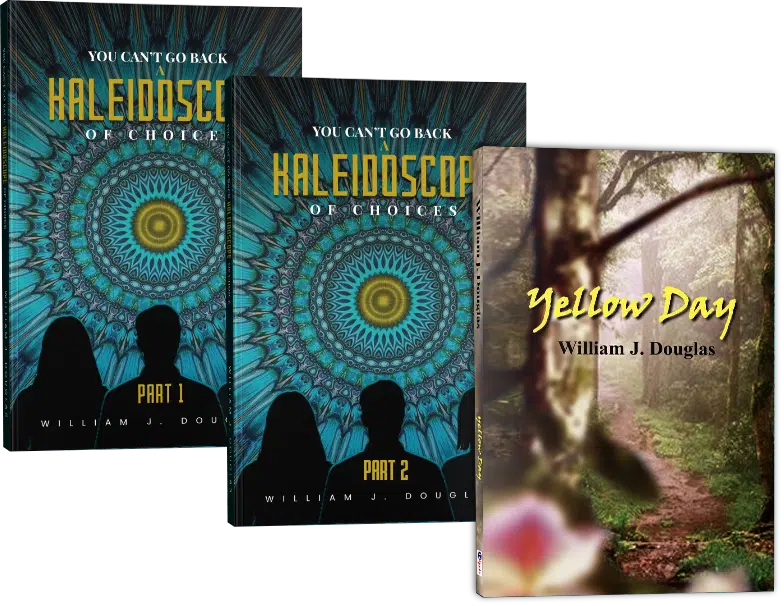
In the book, “You Can’t Go Back – A Kaleidoscope of Choices; Two Volumes, Part I and Part II” by William J. Douglas, a twisting tale of intrigue and deception, a love saga occurs amid the burgeoning industrialized Michigan of the early 20th century. In which adults band together to save families from disgrace while kids struggle to obey parental orders. A compelling tale of two families who become embroiled in crucial decisions affecting their reputations and the futures of their children.
One family is the patriarchal of a Detroit car industry executive, while the other is that of a self-made Irish immigrant. The decisions made by two sisters from one family and a brother from the other cause tension and stress, which leaves the reader uncertain of the results. The narrative develops like a kaleidoscope picture of unchangeable patterns. Historical personalities, Church leaders, and 20th-century events heavily influence the plot. The book is presented in two parts and is one of the best realistic fiction books.
What makes a book the most realistic?
A book is considered the best in the realistic fiction genre based on a combination of several factors that contribute to its literary merit and impact on readers.
Here are some key elements that can make a book stand out as the best realistic fiction books:
1. Believable Characters:

Via Freepik
Compelling and well-developed characters who feel authentic and relatable are crucial in realistic fiction. Readers should be able to connect with the characters’ emotions, struggles, and growth throughout the story.
2. Realistic Setting:

Realistic Setting
A vividly portrayed and recognizable setting that reflects the real world helps ground the story in reality.
3. Engaging Plot:

Via storyboardthat
An engaging and well-paced plot that reflects everyday life, relationships, and challenges can captivate readers.
4. Exploration of Human Experience:

Via cifar.ca
The best realistic fiction delves into universal themes and explores the complexity of human experiences. It may touch on topics such as love, loss, family dynamics, identity, and personal growth.
5. Character-Driven Narrative:
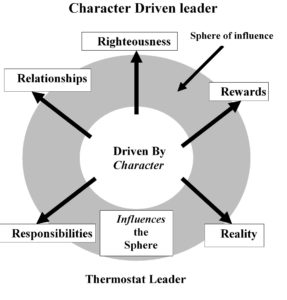
Via atxes
Realistic fiction often focuses on its characters’ internal conflicts and growth. The characters’ actions and decisions should drive the story’s progression.
6. Emotional Resonance:

Via static.hindawi
A book’s ability to evoke genuine emotions in readers, whether joy, sadness, empathy, or introspection, is a sign of its impact and power.
7. Relevance and Timeliness:
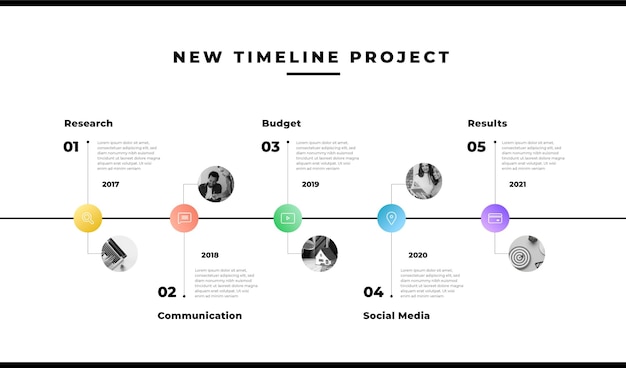
Via freepik
The best realistic fiction often addresses contemporary issues or timeless themes that remain relevant to readers across generations.
8. Well-Written Prose:

Via i.pinimg
Skillful and eloquent writing enhances the reading experience. Strong descriptive language, dialogue, and narrative voice contribute to the book’s quality.
9. Critical Acclaim and Recognition:

Via reedpopcdn
Positive reviews, literary awards, and widespread recognition from readers and critics can contribute to a book’s reputation as the best in its genre.
10. Longevity and Enduring Appeal:
Via encrypted-tbn0.gstatic
A book’s ability to remain popular and resonate with readers over time is a testament to its quality as the best realistic fiction.
Frequently Asked Questions:
-
Why should teenagers read realistic fiction books?
Realistic fiction books offer teenagers a chance to explore relatable themes and characters that mirror their own experiences. Through these stories, they can gain insights, empathy, and valuable life lessons.
-
What makes these books the best realistic fiction for teenagers?
The selected books are considered the best in the genre because they skillfully tackle real-life issues, have well-developed characters, and resonate with teenagers’ emotions, thoughts, and struggles.
-
Can adults enjoy these books, too?
Absolutely! While these books are written with a teenage audience in mind, their powerful narratives and universal themes make them appealing to readers of all ages.
-
Are there any other recommended best realistic fiction books for teenagers?
Some other realistic fiction books include “Looking for Alaska,” and “The Fault in Our Stars” by John Green, and “Thirteen Reasons Why” by Jay Asher.
Conclusion
Realistic fiction holds the power to captivate and inspire young minds, allowing teenagers to find solace, connection, and a sense of belonging within its pages. The five best realistic fiction books mentioned above are exceptional works of literature that delve deep into the hearts of adolescents, addressing a myriad of issues they may encounter. Whether it’s self-discovery, first love, speaking up against injustice, or coping with mental health, these books allow teenagers to explore diverse perspectives and grow intellectually and emotionally. Encouraging young adults to read such books can foster empathy, resilience, and a lifelong love for reading.
So, why wait? Dive into these gripping tales and embark on an unforgettable literary journey today.

